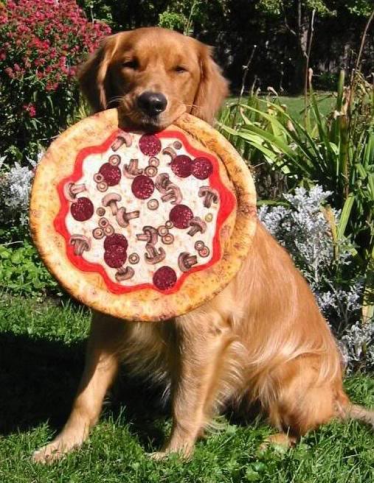
There are few things in the dog world that stimulate more controversy than what dog food to feed. The internet is full of advice by “experts” that in reality are just their personal opinions. One popular site is run by a dentist. The following is information gathered through talks with veterinary nutrition specialists. This group, the American College of Veterinary Nutrition, has their own web site www.acvn.org where you can get additional facts.
The first step is to learn to read pet food labels. There is important information on the label to get you started in the right direction. Check the following:
- The manufacturer’s name. Is the company large enough to employ a veterinary nutritionist? It is very important that the people formulating the food be knowledgeable.
- Is the food complete and balanced? Some foods are supplements that are not a complete and balanced diet. It will state this on the label.
- For what life stage is the diet designed? Some diets are complete and balanced for all life stages. These foods can be fed to puppies and adults, but because pups have a higher calorie requirement they may contain too many calories for a house dog. It is better to feed most mature dogs a maintenance food for adults. On the other hand, field trial or very active dogs may need the higher calorie formulations.
- Also look at how was the food tested to be sure it is complete and balanced? The best test is feeding trials where dogs are fed the diet over time and evaluated. The other method is comparing the nutrient list to the list compiled by AAFCO (the American Association of Feed Control Officials). This method is far inferior to feeding trials where you prove, in the dog, that the food works.
- The ingredient list is on the label, and this may be the area with the most confusion. The ingredients are listed in the order of the quantity of each (by weight). Some manufacturers add trace amounts of nutrients to make you think the diet is of increased quality. If these ingredients are listed after the trace vitamins they are essentially worthless. (maybe 1 blueberry in a batch of food!).
There is a lot of confusion and misinformation about the ingredients in dog foods. Many foods contain by-products. Are they inferior foods? What are by-products? These are the parts of the slaughtered animal that we Americans do not eat much. They include the heart, lungs, stomach, intestines (cleaned of feces), and organs e.g. the liver. In many areas of the world these are delicacies. There is nothing wrong with good quality by-products. I must admit, however, the term is off-putting. Some foods do contain the muscle meats that you may prefer. The ingredient list will start with beef, chicken, lamb, etc. These foods may cost more, but it may be worth it to you.
Some terms on pet food labels have no official meaning. These include “organic”, “human grade”, “premium”, and “holistic”. Natural foods should comply with the AAFCO guide for natural foods.
What about grains? Many people tell me now that they feed grain free foods. There really is no scientific reason that your dog cannot have some grain in their food. Dogs are omnivores – in other words they can digest both animal and plant proteins. Many people attribute food allergies to feeding grains. Again this is not scientifically born out. Food allergies do occur in dogs, but they are fairly rare. They are usually due to animal proteins. If you have a question, speak to your veterinarian.
What about gluten free foods? What is gluten? Gluten is the main protein in wheat after washing out the starch. It is a popular human food in Asia as a meat substitute. Some people cannot digest wheat gluten (e.g. people with celiac disease), and so these individuals are on gluten free diets. In dogs there is not generally a problem with gluten in the food except for a colony of Irish Setters.
Should you feed dry or canned food? Either type can be fed according to your personal preference. Dry food may help some with reducing tartar on the teeth depending on how the food is manufactured. Many people feed dry with a treat of some canned food. Many dogs do best on a consistent diet, and they may get diarrhea if the diet is altered too much. I do not recommend semi-moist foods as they contain too many carbohydrates.
What about raw foods? Raw foods can be complete and balanced. I do not personally recommend these foods due to the increased risk of bacterial contamination. Bacterial contamination can affect your dog and possibly your family. If you choose raw, use strict hygiene procedures.
What about table scraps? I think the vast majority of dog owners give their dog some scraps. Somehow they train us to do this! Two words of advice: 1) do not feed your dog when you are at the table. You will create a dog that begs while you try to eat. 2) Avoid scraps that are very high in fat. Many mature dogs cannot digest these foods, and it may predispose them to pancreatitis (a very serious and painful condition).

Probably not the best choice!
Can you make your own diet? I definitely do not recommend you formulate your own food. It is very easy to feed an imbalanced diet that will create problems over time. If your pet needs a home cooked diet consult with a veterinary nutritionist for a plan (http://www.acvn.org/directory/).
The internet can be a great source of both information and misinformation. Remember that many sites are just personal opinion. Many of the larger manufacturers are almost demonized with statements e.g. “they are only in it for the money.” Purina, Hills (Science Diet), and Iams all have large research facilities to advance canine nutrition. All three companies also produce prescription diets that we use for specific medical conditions (e.g. kidney failure). I am not endorsing a specific product, but I just want you to be an educated consumer

Nice one for sharing this cool content. It has definitely helped me.
LikeLike
Heya, awesome information. Now i’m encouraged by your blog posts here. Hopefully in the future I will be building top notch blogs just like this. Stay blessed!!
LikeLike